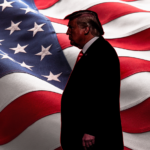Rather than fear the ever-increasing availability of alternative capital, reinsurers aren’t just making the best of it. They’re taking advantage of the money source and aligning it with their own needs, Standard & Poor’s Global Ratings said in a new report.
“Alternative capital continues to erode traditional reinsurers’ margins,” the report found. “Nevertheless, reinsurers have embraced third-party capital through instruments like sidecars, collateralized reinsurance and catastrophe bonds. Increasingly, the retrocession market depends on this convergence capital.”
Standard & Poor’s said the use of these options has helped the reinsurance industry boost its premiums while maintaining its net exposures at the same time.
The report points out that even with $138 billion in global insured losses from 2017’s massive natural catastrophe events, “there was more than enough inflow of alternative capital to renew coverage for cedants on Jan. 1, 2018.” What’s more, that extra capital helped limit “extreme price hikes” that typically come after severe losses. S&P added that “ILS funds now manage just under $100 billion of capital.”
Standard & Poor’s reiterates that insurance-linked securities have transformed the market and the property-catastrophe reinsurance sector in particular. Investors remain enthusiastic about the various financial instruments in the alternative capital space, even with the historic catastrophe losses of 2017, the ratings agency said.
ILS funds now manage close to $100 billion of capital as of July 2018, S&P said, undaunted by the losses generated by Hurricanes Harvey, Irma and Maria in the Carribbean, Texas and Florida.
“Investors, scenting the change of increased returns, replaced capital that had been put aside as collateral to cover insured losses, enabling them to participate in the Jan. 1, 2018 round of renewals,” the report said.
Standard & Poor’s added: “We saw no capital flight following the negative investment returns that followed the 2017 hurricanes as losses were within investors’ expectations. Indeed, the market was able to more than restore the collateral trapped following the 2017 events.”
The full report is titled “How Reinsurers Have Learned to Align Third-Party Capital With Their Needs.”
Source: Standard & Poor’s




















 Hiring for Attitude: What Sets Lemonade Apart
Hiring for Attitude: What Sets Lemonade Apart  Mixed Bag: What Trump 2.0 Tariffs, DOGE Activities Mean For Insurers
Mixed Bag: What Trump 2.0 Tariffs, DOGE Activities Mean For Insurers  Soft Market Ahead? The Role of Digital Transformation for E&S Insurers
Soft Market Ahead? The Role of Digital Transformation for E&S Insurers  Reporter’s Notebook: ‘Nobody Else Does Telematics,’ Lemonade Exec Says
Reporter’s Notebook: ‘Nobody Else Does Telematics,’ Lemonade Exec Says 



